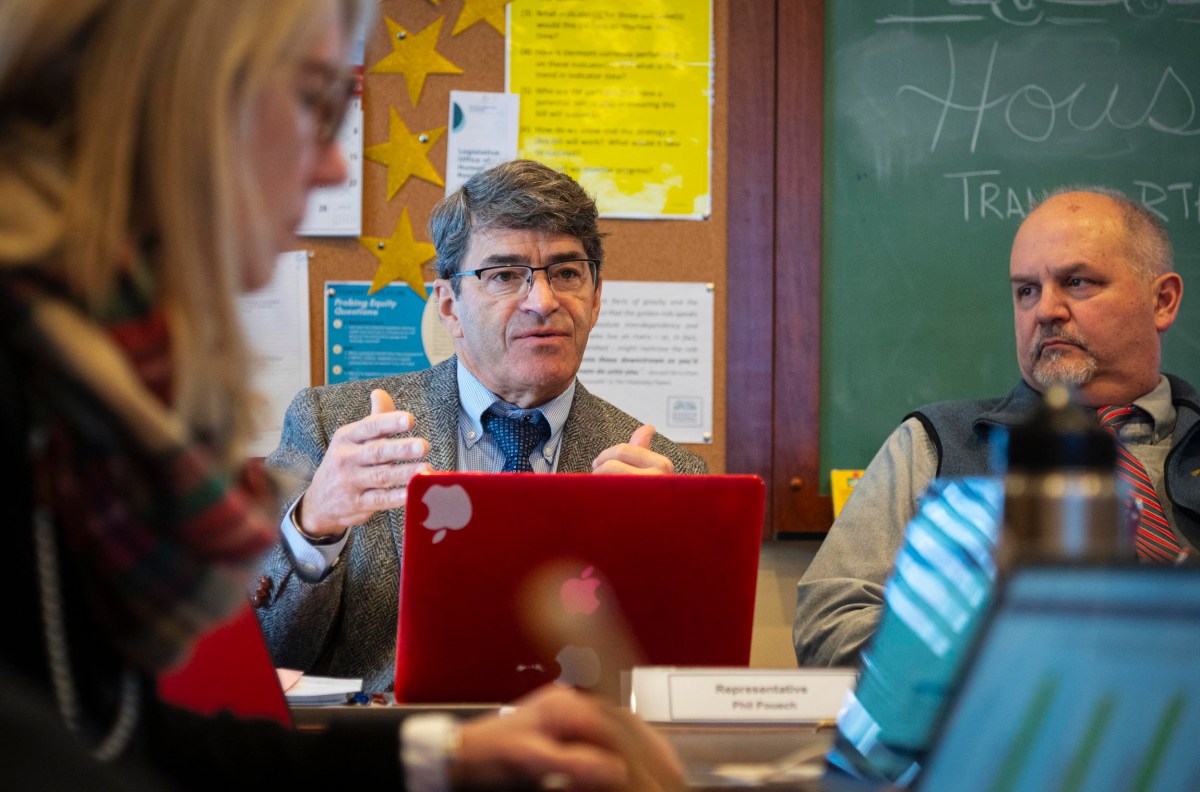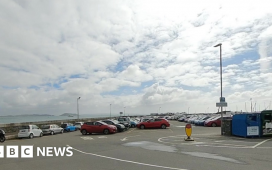
Idaho is not a place, as far as I know, that comes up in the Vermont Statehouse all that often. But the House Transportation Committee has been considering a proposal first enacted in that state — and that supporters here say would make it safer to ride bicycles in busy areas.
Rep. Phil Pouech, D-Hinesburg, is urging his fellow committee members to add language into this year’s miscellaneous motor vehicle bill that would allow cyclists to treat stop signs like yield signs — essentially, letting them coast through intersections when no drivers or pedestrians are present.
The policy is often called an “Idaho stop,” because the Gem State (yes, that’s what they call it) was the first in the country to put such an idea on the books. Today, 11 states have enacted similar laws, according to Local Motion, a Burlington-based advocacy organization for cyclists.
Pouech’s amendment would also allow bikers to follow pedestrian signals, instead of normal traffic lights, at intersections. Both that measure, and the “Idaho stop,” were part of companion House and Senate bills introduced earlier this year that have not advanced on their own.
The motor vehicle bill, S.123, has already cleared the Senate and is now being considered in House Transportation. On Friday, the panel heard from several witnesses who said they support tacking Pouech’s proposal onto the DMV bill, which is one of the “must-pass” bills each year.
Jonathon Weber, programs director for Local Motion, told the committee many cyclists already do what the amendment proposes to legalize because they know that it makes them safer.
Following pedestrian signals allows cyclists to clear through intersections before vehicles start moving, reducing the likelihood of crashes, he said. Meanwhile, he said, letting cyclists avoid stopping at an intersection — and in many cases, avoid having to unclip their shoes from their pedals as a result — would also reduce the time that they spend in such crash-prone areas.
Weber pointed to research published last year by the National Highway Traffic Safety Administration, an arm of the U.S. Department of Transportation, which found that existing stop-as-yield laws were associated with reduced crash rates, particularly at intersections in suburban communities.
“We believe that Vermonters shouldn’t have to break the law in order to perform a safe and helpful behavior out on the streets,” he said Friday.
Much of the language in the annual DMV bill is proposed by the state Agency of Transportation — and the legislation contains many relatively minor changes to motor vehicle laws. The agency isn’t taking a position either for or against Pouech’s proposal, he said Friday.
House Transportation is expected to take up the issue again Tuesday, he said, when it could vote on his amendment and then on the bill as a whole.
— Shaun Robinson
In the know
About 95% of people incarcerated in Vermont will one day leave prison. But getting out — and staying out — relies on a system that often appears rigged against those reentering society.
“The system as it’s built today forces individuals to jump through hoops that many of us in this room would struggle through, even in the best of circumstances,” Nick Deml, Vermont Department of Corrections commissioner, told participants at the state’s first ever reentry simulation.
More than 50 people, including prison staff, state human services employees, lawmakers, judicial officials and community social services providers spent Friday morning reenacting the brutal bureaucracy people leaving prison face every day. Those exiting incarceration often start life from scratch — forced to acquire basic identification, obtain employment and find housing — all while battling food insecurity and lack of transportation.
Read more about the reentry simulation here.
— Ethan Weinstein
On the move
House and Senate leaders on Friday set up conference committees to work out their differences over the state’s 2026 budget, which is H.493, and the state’s annual transportation bill, H.488.
The members of the budget committee are: Rep. Robin Scheu, D-Middlebury; Rep. Jim Harrison, R-Chittenden; Rep. Tiff Bluemle, D-Burlington; Sen. Andrew Perchlik, D/P-Washington; Sen. Richard Westman, R-Lamoille; and Sen. Ginny Lyons, D-Chittenden Southeast.
The budget conferees held a brief organizational meeting Friday afternoon, with members expressing some optimism that they could wrap up their negotiations by Thursday. They penciled in their next meeting for Monday afternoon.
For the T-bill, the committee members are: Rep. Matthew Walker, R-Swanton; Rep. Timothy Corcoran, D-Bennington; Rep. Mollie Burke, D-Brattleboro; Sen. Becca White, D-Windsor; along with Perchlik and Westman as well.
— Shaun Robinson
Leaders of Vermont municipalities hammered by flooding in 2023 and 2024 are hoping for movement in the Senate on H.397, currently in the Senate Government Operations Committee. Along with creating new state-level flood response and preparedness and responsibilities, the bill has a variety of measures geared toward helping those communities keep as much of their revenue as possible.
The bill would also create a new “municipal grand list stabilization fund,” which for five years would reimburse municipalities for lost property taxes on flood buyouts, since properties purchased by communities for flood mitigation or recovery represent a loss in potential property tax revenue. It also puts in place a new state-led flood buyout program to replace or add onto the flood buyouts from the Federal Emergency Management Agency.
Another provision would allow communities to keep a larger percentage of their local options tax, 75% rather than 70%, Waszazak said. The remaining portion goes into a state fund that provides tax relief to municipalities for state-owned property.
Read more about what municipal leaders in central Vermont have to say about the bill here.
— Erin Petenko
Visit our 2025 bill tracker for the latest updates on major legislation we are following.





